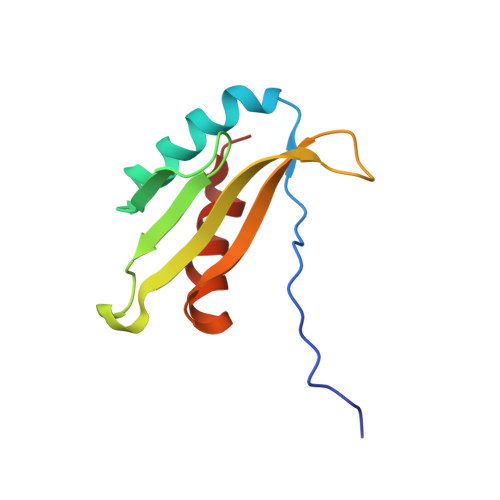Solution structure of the kinase-associated domain 1 of mouse microtubule-associated protein/microtubule affinity-regulating kinase 3
Tochio, N., Koshiba, S., Kobayashi, N., Inoue, M., Yabuki, T., Aoki, M., Seki, E., Matsuda, T., Tomo, Y., Motoda, Y., Kobayashi, A., Tanaka, A., Hayashizaki, Y., Terada, T., Shirouzu, M., Kigawa, T., Yokoyama, S.(2006) Protein Sci 15: 2534-2543
- PubMed: 17075132
- DOI: https://doi.org/10.1110/ps.062391106
- Primary Citation of Related Structures:
1UL7 - PubMed Abstract:
Microtubule-associated protein/microtubule affinity-regulating kinases (MARKs)/PAR-1 are common regulators of cell polarity that are conserved from nematode to human. All of these kinases have a highly conserved C-terminal domain, which is termed the kinase-associated domain 1 (KA1), although its function is unknown. In this study, we determined the solution structure of the KA1 domain of mouse MARK3 by NMR spectroscopy. We found that approximately 50 additional residues preceding the previously defined KA1 domain are required for its proper folding. The newly defined KA1 domain adopts a compact alpha+beta structure with a betaalphabetabetabetabetaalpha topology. We also found a characteristic hydrophobic, concave surface surrounded by positively charged residues. This concave surface includes the highly conserved Glu-Leu-Lys-Leu motif at the C terminus, indicating that it is important for the function of the KA1 domain.
- RIKEN Genomic Sciences Center, Tsurumi, Yokohama 230-0045, Japan.
Organizational Affiliation:
















